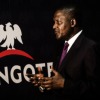Sunday, 31 May 2015
Beautiful Kenya
Lapped by the Indian Ocean, straddling the equator, and with Mount
Kenya rising above a magnificent landscape of forested hills, patchwork
farms and wooded savanna, Kenya is a richly rewarding place to travel.
The country’s dramatic geography has resulted in a great range of
natural habitats, harbouring a huge variety of wildlife, while its
history of migration and conquest has brought about a fascinating social
panorama, which includes the Swahili city-states of the coast and the
Maasai of the Rift Valley.
Kenya’s world-famous national parks, tribal peoples and superb beaches lend the country an exotic image with magnetic appeal. Treating it as a succession of tourist sights, however, is not the most stimulating way to experience it. If you get off the beaten track, you can enter the world inhabited by most Kenyans: a ceaselessly active scene of muddy farm tracks, corrugated-iron huts, tea shops and lodging houses, crammed buses and streets wandered by goats and children. Both on and off the tourist routes, you’ll find warmth and openness, and an abundance of superb scenery – rolling savanna dotted with Maasai herds and wild animals, high Kikuyu moorlands grazed by cattle and sheep, and dense forests full of monkeys and birdsong. Of course Kenya is not all postcard-perfect: start a conversation with any local and you’ll soon find out about the country’s deep economic and social tensions.
Kenya’s world-famous national parks, tribal peoples and superb beaches lend the country an exotic image with magnetic appeal. Treating it as a succession of tourist sights, however, is not the most stimulating way to experience it. If you get off the beaten track, you can enter the world inhabited by most Kenyans: a ceaselessly active scene of muddy farm tracks, corrugated-iron huts, tea shops and lodging houses, crammed buses and streets wandered by goats and children. Both on and off the tourist routes, you’ll find warmth and openness, and an abundance of superb scenery – rolling savanna dotted with Maasai herds and wild animals, high Kikuyu moorlands grazed by cattle and sheep, and dense forests full of monkeys and birdsong. Of course Kenya is not all postcard-perfect: start a conversation with any local and you’ll soon find out about the country’s deep economic and social tensions.
Majority of Kenyans don't want Raila to contest 2017 elections
Nairobi - 33% of Kenyans do not want CORD leader Raila Odinga to contest the 2017 Presidential Elections.
In a survey done by pollster Ipsos Synovate, the 33% thought that it would not be a good reason for Raila to contest the elections come 2017 an should instead retire.
Another 27% thought that Raila should continue to be active politically but should not contest the elections come 2017.
34% on their part, thought that Raila should contest the 2017 elections.
" Among all respondents, one third are of the view that Raila should indeed retire from politics completely with a statistically identical proportion (34%) holding the opposite view: that he should remain active and even contest the next presidential election should he desire to do so (and receive his party’s/coalition’s nomination, of course)," Ipsos said in a statement.
Talk of whether the CORD leader should contest the next polls has been rife, with political folk from both the ruling Jubilee coalition and their CORD counterparts having a say on the matter.
Raila himself has been equivocal that he will run for the presidency on a CORD ticket come 2017.
" I will contest for the 2017 General Election, that is a fact," he said back in March.
Detractors claim that Raila is too old to contest the elections and should let the younger folk do so instead.
In a survey done by pollster Ipsos Synovate, the 33% thought that it would not be a good reason for Raila to contest the elections come 2017 an should instead retire.
Another 27% thought that Raila should continue to be active politically but should not contest the elections come 2017.
34% on their part, thought that Raila should contest the 2017 elections.
" Among all respondents, one third are of the view that Raila should indeed retire from politics completely with a statistically identical proportion (34%) holding the opposite view: that he should remain active and even contest the next presidential election should he desire to do so (and receive his party’s/coalition’s nomination, of course)," Ipsos said in a statement.
Talk of whether the CORD leader should contest the next polls has been rife, with political folk from both the ruling Jubilee coalition and their CORD counterparts having a say on the matter.
Raila himself has been equivocal that he will run for the presidency on a CORD ticket come 2017.
" I will contest for the 2017 General Election, that is a fact," he said back in March.
Detractors claim that Raila is too old to contest the elections and should let the younger folk do so instead.
Saturday, 30 May 2015
This Is Africa: BACKGROUND TO ASHANTI
This Is Africa: BACKGROUND TO ASHANTI: The period in which these Ashanti Ballads are set is the late 1950's when the Gold Coast became Ghana - the first African colony to ac...
HISTORY OF MAASAI
The Maasai are a Nilotic group. They inhabit the African Great Lakes region. Nilotes speak Nilo-Saharan language, and came to Southeast Africa by way of South Sudan. Most Nilotes in the area, including the Maasai, the Samburu and the Kalenjin, are pastoralists, and are famous for their fearsome reputations as warriors and cattle-rustlers. As with the Bantu, the Maasai and other Nilotes in Eastern Africa have adopted many customs and practices from the neighboring Cushitic groups, including the age set system of social organization, circumcision, and vocabulary terms.
According to their own oral history, the Maasai originated from the lower Nile valley north of Lake Turkana
(Northwest Kenya) and began migrating south around the 15th century,
arriving in a long trunk of land stretching from what is now northern
Kenya to what is now central Tanzania between the 17th and late 18th
century. Many ethnic groups that had already formed settlements in the
region were forcibly displaced by the incoming Maasai,[11]
while other, mainly southern Cushitic groups, were assimilated into
Maasai society. The resulting mixture of Nilotic and Cushitic
populations also produced the Kalenjin and Samburu.
The Maasai territory reached its largest size in the mid-19th century, and covered almost all of the Great Rift Valley and adjacent lands from Mount Marsabit in the north to Dodoma in the south. At this time the Maasai, as well as the larger Nilotic group they were part of, raised cattle as far east as the Tanga coast in Tanganyika (now mainland Tanzania). Raiders used spears and shields, but were most feared for throwing clubs (orinka) which could be accurately thrown from up to 70 paces (appx. 100 metres). In 1852, there was a report of a concentration of 800 Maasai warriors on the move in what is now Kenya. In 1857, after having depopulated the "Wakuafi wilderness" in what is now southeastern Kenya, Maasai warriors threatened Mombasa on the Kenyan coast.
The Maasai territory reached its largest size in the mid-19th century, and covered almost all of the Great Rift Valley and adjacent lands from Mount Marsabit in the north to Dodoma in the south. At this time the Maasai, as well as the larger Nilotic group they were part of, raised cattle as far east as the Tanga coast in Tanganyika (now mainland Tanzania). Raiders used spears and shields, but were most feared for throwing clubs (orinka) which could be accurately thrown from up to 70 paces (appx. 100 metres). In 1852, there was a report of a concentration of 800 Maasai warriors on the move in what is now Kenya. In 1857, after having depopulated the "Wakuafi wilderness" in what is now southeastern Kenya, Maasai warriors threatened Mombasa on the Kenyan coast.
BACKGROUND TO ASHANTI
The ballads record aspects of a traditional way of life with which the modern Ghanaian city dweller is losing contact. For the benefit of strangers to Ghana, the following notes have been provided to give a background to the Ashanti Region around the time of independence. The name Ashanti was used by British colonial administrators to describe the Kingdom of Asante.
Geography
The Ashanti Region of Ghana lies at the heart of the West African tropical rain forest. The only major city is the capital, Kumasi, which is about 150 miles inland from the Gulf of Guinea. The area of Ashanti is 9400 square miles (approximately one fifth that of England) with a population of about one million at the period independence, to which the ballads refer.History
The Asante kingdom was founded by the great King Osei Tutu in the eighteenth century. His fetish priest was Okomfo Anokye, who unified the Asante states through allegiance to the Golden Stool, which miraculously descended from heaven. Okomfo Anokye planted two trees in the forest and predicted that one tree would live and become the capital of Ashanti. Hence is derived the name Kumasi (the tree lived); the place in which the other tree was planted became Kumawu (the tree died).The Economy at the Time of Independence
Cocoa was the dominant cash crop but food-stuffs, vegetables and fruit for home consumption also flourished. Typical crops were yam, plantain, cassava, maize, okro, pineapples, oranges and paw-paw. From the forest came game (bush meat), palm-wine and timber. The railway wagons leaving Kumasi were packed with logs for export. The gold mines explain why Ghana was called the Gold Coast before independence. The majority of the population lived in villages and worked on their farms, using a system of shifting cultivation. To create a farm it was necessary to clear part of the natural forest, although cocoa could be grown between existing trees.There have been substantial changes in the years since independence, principally the growth of the towns and the decline of cocoa growing.
The Village
The village is a social as well as an economic unit. Everyone participates in the major ceremonies, the most frequent of which are funeral celebrations which typically last several days. Attendance at funerals is normally expected from everyone in the village and expenditure on funerals is a substantial part of the household budget. In each village there are people of particular importance. The Chief ( odikro ) together with the Elders maintains traditional customs and ceremonies and deals with disputes. The fetish priest ( okomfo ) and the herbalist ( odunsini ) provide a medical service which can be partly paid for in local produce (a hen, eggs etc.) as opposed to Western medicine which requires cash payment, and usually a considerable journey to the nearest hospital.The fetish priest, when possessed by the gods, is particularly powerful at dealing with spiritual problems (e.g. protection from the witchcraft of enemies). The herbalist relies on local medicines to effect a cure.
The linguist ( okyeame ) has no corresponding role in western society. A man wishing to consult the fetish priest or the Chief addresses his remarks to the Linguist, who then passes them on and returns the reply (even though all three people are present together). The linguist is an intermediary, acting as a buffer to reduce the severity of utterances and so save delicate situations. If the Chief should make a harsh pronouncement, it is the duty of the linguist to euphemise and clothe the statement in proverbs.
The Family
As in most developing countries, there is a strong extended family system. Poorer members may seek financial assistance from their better off relatives for school fees, medical expenses etc. But visitors are always welcomed, even if their arrival may be a cause of financial concern. In Asante, the family line (abusua) passes through the mother to her children. A man is strongly related to his mother's brother but only weakly related to his father's brother. This must be viewed in the context of a polygamous society in which the mother/child bond is likely to be much stronger than the father/child bond.As a result, in inheritance, a man's nephew (sister's son) will have priority over his own son. Uncle-nephew relationships therefore assume a dominant position. (Legislation was introduced in 1984 to change this traditional pattern of inheritance.)
The Language and the Role of Proverbs
The official language is English but this is not spoken by many villagers. The Asante are part of the Akan tribes who speak various dialects of Twi. The language is very rich in proverbs, the use of which is taken to be a sign of wisdom. Euphemisms are very common, especially about events connected with death. Rather than say "the King has died", one would say "a mighty tree has fallen". Proverbs are often used to express ideas indirectly as can be seen from the following: "Obi mfa ne nsa benkum nkyere n'agya amanfo" - this is literally"Do not point to the ruins of your father's house with your left hand"
- which is equivalent to
"Do not scorn culture inherited from your forefathers".
Religion
There is a universal God ( Onyame ) but this does not exclude gods associated with a particular region or spirits ( obosum ) by whom a priest may be possessed. (This lack of exclusiveness makes it possible, say, for a fetish priest to be a Roman Catholic). But there is no doubt of the existence of the Kingdom of the Dead(Samanade) so custom requires that great attention is paid to the proper conduct of burials and funeral celebrations. Death is the one great certainty. Traditional religion does not require regular attendance at particular buildings. Religion is not something that is remembered for one hour a week. The Gods and the spirits of the ancestors are always present.Transport
Most villages are reached only by laterite roads (often pot- holed) and are not served by any type of government transport. Privately owned mammy lorries provide the only link with the towns and carry goods and animals as well as passengers. Many cases have arisen of crops being grown which can not reach market for lack of transport. The mammy lorry is the creation of private enterprise and initiative, designed to meet the pressing need for rural transport.Parallels between Akan Culture & Ancient Ghana
Sources: John Carmichael (African Eldorado, 1993 at pages 58 - 59) Numerous experts have commented on the similarities within the traditions of kingship and cultic practice centering on the mystical nature of gold between imperial Ghana and the Akan peoples of the forest (even the linguistic derivatives from Ghana of Guan and Akan).In many cases, this has been taken as confirmation of a diffusion of ideas from the Sudanese grasslands to the forest of West Africa. Some authorities have looked back even further, tracing the origins of the traditions of divine kingship to Pharaonic Egypt.
Similarities in language such as the word "Ka" for spirit, which in Twi is "Kra", have been noted along with the parallels in ceremonial objects such as the use of funeral masks on royal tombs in Asante and the king's flail, battle axe, crooked sword and fly whisk.
Extreme positions have been adopted on either side; some denying any influence at all, others seeing similarities in every sphere. The truth probably lies somewhere in the middle with a gradual diffusion of Iron Age culture throughout the continent.
Further confirmation of cultural parallels can be found in the writings of Arabic scholars. Al-Bakri, commenting on the customs of ancient Ghana, was fascinated by the matrilineal tradition of succession: "The Kingdom is inherited only by the son of the King's sister". Tunkamanin, the king during the time of al-Bakri, was the nephew of the previous King, King Basi.
The matrilineal succession of ancient Ghana is paralleled exactly within the chieftaincy traditions, which still determine succession among the Twi-speaking peoples of Ghana.
Al-Bakri, coming from a patrilineal culture, explains: "The King has no doubt that his successor is the son of his sister, while he is not certain that his son is in fact his own, and he does not rely on the genuineness of this relationship". Maternity is certain, paternity is often open to question. Al-Bakri's account of the splendour of the court of Ghana, its etiquette and ritual observance is almost indistinguishable from Bowdich's descriptions of the splendours of the Asante court in 1817. Both describe pages or messengers with shields and breastplates decorated with gold and the "awesome sounds" of massed drummers and horns of gold. Although historians cannot be certain about the authenticity of the ances= tral "long march" from ancient Ghana, the parallels in cultural identity indicate a historical legacy, which is more than just coincidence.
Pronounced As: dshdnt or Asante dsdnt , historic and modern administrative region, central Ghana, W Africa. The region is the source of much of Ghana's cocoa. It is inhabited by the Ashanti, a matrilineal Akan people who constitute one of Ghana's major ethnic groups. Before the 13th cent., Akan peoples migrated into the forest belt of present-day Ghana and established small states in the hilly country in the neighborhood of modern Kumasi.
By the late 17th cent. the states had been welded by the Oyoko clan into the Ashanti confederation, with the capital at Kumasi and the Oyoko chieftain as king. After subduing neighboring states the confederation came into conflict with British settlements on the coast, although treaties of friendship were negotiated (1817, 1820).
A series of Anglo-Ashanti wars in the 19th cent. ended with the defeat of the confederation (1896) and its annexation (1901) to the Gold Coast colony. The British exiled King Prempeh I to the Seychelles and, in spite of great resistance, broke up the confederation. It was restored in 1935. In 1945 the Ashanti were given representation in the executive and legislative councils of the Gold Coast. They supported an unsuccessful attempt to give Ghana a federal constitution in 1954 and resisted the centralizing measures of the Nkrumah government. The Ashanti king remains influential in S Ghana. The Ashanti are noted for the quality of their gold work and their colorful kente cloth, and are famous for the gold-encrusted stool that is the symbol of the kingship.
Source: African Eldorado - Ghana from Gold Coast to Independence.
Subscribe to:
Posts (Atom)













